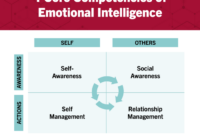Business intelligence best practices are essential for harnessing the power of data to make informed decisions and drive success. In this guide, we’ll explore the key principles, techniques, and ethical considerations to empower you with the knowledge and strategies needed to maximize the value of your business intelligence initiatives.
To make the most of business intelligence, it’s crucial to follow best practices. One key step is hiring a skilled business intelligence analyst. They can help you gather, analyze, and interpret data to make informed decisions. By implementing best practices and leveraging the expertise of a business intelligence analyst, you can gain valuable insights that drive business growth.
Data Management Best Practices

Data management is the foundation of business intelligence. Without accurate and reliable data, it is impossible to make informed decisions.
There are a number of data management best practices that businesses can follow to ensure the quality of their data. These include:
– Data cleansing: This involves removing duplicate data, correcting errors, and filling in missing values.
– Data validation: This involves checking data to ensure that it is accurate and consistent.
– Data governance: This involves establishing policies and procedures to ensure that data is used in a consistent and ethical manner.
By following these best practices, businesses can ensure that their data is of high quality and can be used to make informed decisions.
Data Governance, Business intelligence best practices
Data governance is a critical part of data management. It involves establishing policies and procedures to ensure that data is used in a consistent and ethical manner. Data governance can help to prevent data breaches, ensure compliance with regulations, and improve the quality of data.
Data Analysis Techniques

Data analysis is the process of extracting meaningful insights from data. There are a number of different data analysis techniques that can be used, each with its own strengths and weaknesses.
Some of the most common data analysis techniques include:
– Descriptive statistics: This involves summarizing data using measures such as mean, median, and mode.
– Inferential statistics: This involves using data to make inferences about a population.
– Data mining: This involves using algorithms to find patterns and trends in data.
– Machine learning: This involves using algorithms to learn from data and make predictions.
The choice of data analysis technique depends on the specific business problem that is being addressed.
Visualization and Reporting

Data visualization is the process of presenting data in a visual format. This can make it easier to understand and communicate insights.
There are a number of different data visualization techniques that can be used, including:
– Charts: These are used to show the relationship between two or more variables.
– Graphs: These are used to show the trend of a variable over time.
– Maps: These are used to show data geographically.
The choice of data visualization technique depends on the specific data and the audience that is being targeted.
Reporting is the process of communicating insights from data analysis to decision-makers. Reports should be clear, concise, and actionable.
Data-Driven Decision Making: Business Intelligence Best Practices
Data-driven decision making is the process of using data to make informed decisions. This can help businesses to improve their performance, reduce risks, and make better use of their resources.
There are a number of benefits to data-driven decision making, including:
– Improved decision-making: Data can help businesses to make better decisions by providing them with a more complete understanding of the situation.
– Reduced risks: Data can help businesses to identify and mitigate risks by providing them with early warning signs of potential problems.
– Better use of resources: Data can help businesses to make better use of their resources by identifying areas where they can improve efficiency.
Ethical Considerations
There are a number of ethical considerations that businesses need to be aware of when using business intelligence. These include:
– Data privacy: Businesses need to ensure that they are collecting and using data in a way that protects the privacy of individuals.
– Data security: Businesses need to ensure that data is protected from unauthorized access, use, or disclosure.
– Transparency and accountability: Businesses need to be transparent about how they are using data and be accountable for the decisions that they make based on data.
By following these ethical considerations, businesses can use business intelligence to make a positive impact on their organizations and the world.
Conclusion
By embracing the best practices Artikeld in this guide, you can transform your organization into a data-driven powerhouse, unlocking actionable insights, optimizing decision-making, and achieving exceptional business outcomes.
Implementing business intelligence best practices is crucial for data-driven decision-making. Business intelligence (BI) empowers businesses with insights derived from data analysis.
To fully understand BI best practices, it’s essential to grasp its bi business intelligence definition. This involves collecting, storing, and analyzing data to extract meaningful information.
By leveraging BI best practices, businesses can enhance their data-driven decision-making, optimize operations, and gain a competitive edge.
Detailed FAQs
What are the key elements of effective data management?
Ensuring data quality and accuracy, implementing data management techniques and tools, and establishing data governance processes.
How can data analysis techniques help businesses?
Identifying trends, uncovering patterns, and providing insights to solve business problems and make informed decisions.
What are the best practices for data visualization?
Using clear and concise visuals, choosing appropriate chart types, and considering the audience when creating reports.
How can data-driven decision making improve business outcomes?
By providing a solid foundation for making informed decisions, reducing risks, and optimizing resource allocation.
What ethical considerations should be taken into account in business intelligence?
Protecting data privacy and security, ensuring transparency and accountability, and addressing potential biases in data analysis.




